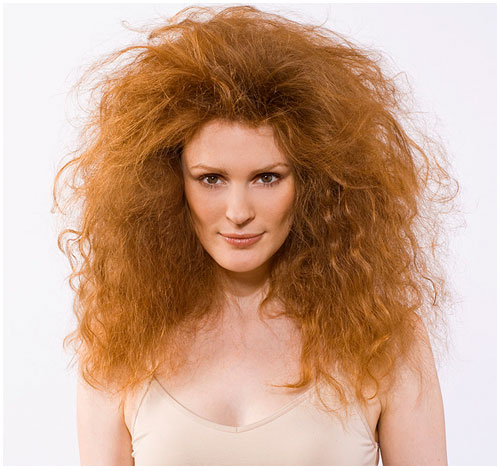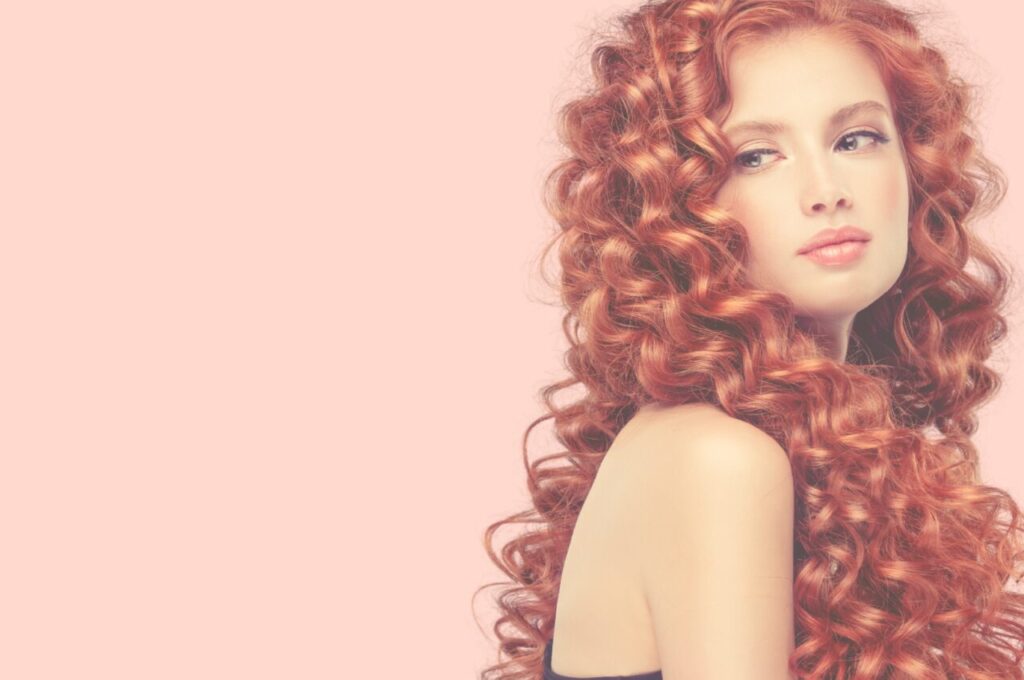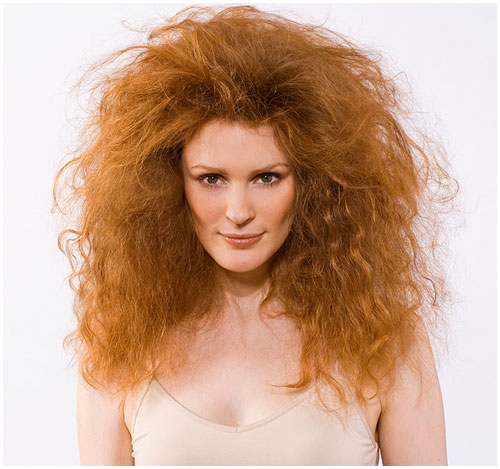So, you’ve got yourself a fabulous ginger wig but are frustrated with the constant battle against frizz. Well, fear not, because we’ve got some fantastic tips that will help you keep that gorgeous mane under control. Whether it’s for a costume, fashion statement, or just a change of style, we’ll show you how to prevent frizz and maintain that sleek, shiny look you desire. Get ready to say goodbye to those flyaways and hello to hair perfection!
Choosing the Right Wig
When it comes to choosing a wig, it’s important to select one that is of high quality. High-quality wigs are made with attention to detail and with the best materials, ensuring durability and a natural appearance. Look for wigs that are made from high-quality synthetic fibers or human hair, as these tend to have a more realistic look and feel.
Selecting a High-Quality Wig
A high-quality wig will have a realistic hairline and a natural-looking part. Take the time to examine the wig closely, looking for any signs of poor craftsmanship or unnatural-looking features. The wig should also be comfortable to wear, with an adjustable cap size that fits securely on your head.
Opting for Human Hair Wigs
If you want the most natural-looking wig, consider opting for a human hair wig. These wigs are made from real human hair, giving them a soft texture and a realistic appearance. Human hair wigs can also be styled and colored just like your own hair, offering versatility and the ability to create different looks.
Considering the Wig Construction
Different wigs are constructed in various ways, so it’s important to consider the construction of the wig before making a purchase. There are three main types of wig construction: machine-made, hand-tied, and lace-front. Machine-made wigs are generally more affordable but may not have as natural a look as hand-tied or lace-front wigs. Hand-tied wigs offer a more realistic appearance and greater comfort, while lace-front wigs have a nearly invisible hairline for the most natural look.
Prepping Your Wig Before Wearing
Once you have chosen the perfect wig, it’s crucial to properly prepare it before wearing. This will not only help to keep your wig looking its best but also ensure a comfortable and natural fit.
Washing and Conditioning the Wig
Before wearing your wig for the first time, it’s important to wash and condition it. This will remove any residual chemicals from the manufacturing process and ensure that the fibers are clean and fresh. Use a gentle shampoo specifically formulated for wigs and lukewarm water to wash the wig. Gently massage the shampoo into the wig, taking care not to rub the fibers too vigorously. Rinse thoroughly and apply a wig conditioner, focusing on the ends. Rinse again and gently squeeze out any excess water.
Using a Leave-In Conditioner
To further condition and protect your wig, consider using a leave-in conditioner. Leave-in conditioners provide extra moisture and nourishment to the wig fibers, helping to prevent frizz and keep the hair looking smooth and shiny. Simply spray the leave-in conditioner onto the wig, focusing on the mid-lengths and ends, and gently comb it through with a wide-tooth comb.
Detangling the Wig
Before wearing your wig, it’s important to detangle it gently to prevent any damage to the fibers. Start by using a wide-tooth comb or a wig brush specifically designed for wigs. Begin combing from the ends of the wig, gradually working your way up to the roots. Be patient and gentle, as excessive pulling or tugging can cause the fibers to break or become frizzy. By detangling your wig before wearing it, you can ensure that it looks smooth and natural.

Styling Techniques for Frizz Prevention
Frizzy hair can be a common problem with wigs, but there are several styling techniques you can use to prevent frizz and keep your wig looking sleek and smooth.
Avoiding Heat Styling Tools
Excessive heat can damage wig fibers and cause them to become frizzy. It’s best to avoid using heat styling tools such as flat irons, curling irons, or hot rollers on your wig. If you want to style your wig, consider using heat-free methods such as foam rollers or braiding the hair while it’s damp. This will help to create a desired style without causing frizz or heat damage.
Using a Wide-Tooth Comb
When styling your wig, it’s important to use the right tools to prevent frizz. Opt for a wide-tooth comb or a wig brush with wide-spaced bristles. These tools will help to detangle the hair without causing breakage or frizz. Start by gently combing through the ends of the wig, gradually working your way up to the roots. Avoid aggressive brushing or combing, as this can lead to frizz and damage to the wig fibers.
Applying Anti-Frizz Products
To further prevent frizz and keep your wig looking smooth, consider using anti-frizz products specifically designed for wigs. These products can help to control flyaways and provide a sleek, polished look. Look for serums, sprays, or creams that are lightweight and non-greasy, as these will not weigh down the hair or leave a residue. Apply a small amount of the anti-frizz product to your hands and gently smooth it over the wig, focusing on the ends and any areas prone to frizz.
Protective Hairstyles
Protective hairstyles can help to keep your wig in place and prevent frizz, especially when you’re on the go or during sleep.
Braiding or Twisting the Wig
One popular protective hairstyle for wigs is braiding or twisting the hair. This not only keeps the wig secure but also helps to prevent tangling and frizz. Start by dividing the wig into sections and then braid or twist each section, securing the ends with small hair ties or bobby pins. This will keep the wig neat and tidy, minimizing the risk of frizz and ensuring that it stays in place.
Tying the Wig in a Loose Bun
Another protective hairstyle option is to tie the wig in a loose bun. This can be done by gathering the hair into a loose ponytail and then twisting the hair around itself to create a bun shape. Secure the bun with bobby pins or a hair tie, making sure to keep it loose to avoid tension on the wig. This hairstyle not only protects the wig from frizz but also keeps it out of the way and prevents tangling.
Using a Silk or Satin Wrap
When going to bed or lounging at home, it’s important to protect your wig from friction and moisture. One way to do this is by using a silk or satin wrap. Silk and satin materials are smooth and gentle on the wig, reducing the risk of frizz and maintaining the style. Simply wrap the wig in a silk or satin scarf or bonnet before going to bed or when relaxing at home. This will help to keep the wig in place and prevent it from rubbing against pillows or other fabrics that can cause frizz.

Handling the Wig with Care
Proper handling of your wig is essential to maintaining its quality and preventing frizz. By following a few simple guidelines, you can keep your wig looking its best for longer.
Avoiding Excessive Touching
While it can be tempting to constantly adjust your wig or run your fingers through the hair, excessive touching can lead to frizz and damage. Avoid touching the wig unnecessarily, as the natural oils from your hands can transfer to the hair and cause it to become greasy and frizzy. If you need to adjust the wig or fix any stray hairs, use a wide-tooth comb or your fingertips to gently do so.
Keeping the Wig Away from Moisture
Moisture can cause wig fibers to become frizzy and lose their shape. Avoid wearing your wig in humid conditions, such as during rainfall or in steamy environments. If your wig does become wet, gently blot it with a towel and allow it to air dry completely before wearing it again. Never use a hairdryer or other heat source to speed up the drying process, as this can cause damage to the wig fibers.
Protecting the Wig at Night
When you’re ready to take off your wig for the day, it’s important to store it properly to prevent frizz. Invest in a wig stand or wig head to store your wig, ensuring that it is not left in a tangled mess. Before placing the wig on the stand or head, make sure it is clean and dry. This will help to maintain the wig’s shape and prevent frizz from forming overnight. Additionally, consider covering the wig with a silk or satin scarf or using a wig cap to protect it further during storage.
Avoiding Environmental Factors
Environmental factors such as humidity, heat, wind, and dust can all contribute to frizz in a ginger wig. Taking steps to shield your wig from these elements can help to maintain its appearance and prevent frizz.
Shielding the Wig from Humidity
Humidity can cause wig fibers to absorb moisture, resulting in frizz and a lack of style hold. If you live in a humid climate or will be spending time in humid conditions, consider using anti-humidity products specifically designed for wigs. These products can help to create a barrier on the wig fibers and prevent moisture absorption. Additionally, try to stay indoors or seek shade when possible during humid weather to minimize exposure to moist conditions.
Minimizing Exposure to Heat
Excessive heat can cause wig fibers to become frizzy and damaged. Avoid exposing your wig to direct sunlight for extended periods, as the sun’s rays can fade the color and dry out the hair. If you’re going to be outside on a hot day, consider wearing a wide-brimmed hat or using an umbrella to provide shade for your wig. This will help to protect it from the heat and prevent frizz.
Protecting from Wind and Dust
Wind can blow wig fibers around and tangle them, leading to frizz and a disheveled appearance. To protect your wig from wind, consider using a wig cap or wrapping a silk or satin scarf around it. This will help to keep the wig in place and prevent strands of hair from becoming tangled. Likewise, wearing a hat or headscarf can also shield your wig from dust and other environmental particles that can cause frizz and dullness.

Long-Term Maintenance
Maintaining your wig in the long run is essential to keep it looking its best and prolong its lifespan. By following a regular maintenance routine, you can prevent frizz and ensure that your wig stays in optimal condition.
Regular Washing and Conditioning
Regularly washing and conditioning your wig is crucial for maintaining its cleanliness and preventing frizz. Aim to wash your wig every 6-8 wears, or more frequently if you are active or perspire heavily. Use a gentle shampoo and conditioner specifically formulated for wigs, and follow the same washing and conditioning steps mentioned earlier. Regular cleansing will remove any build-up, oils, or dirt that can contribute to frizz and dullness.
Storing the Wig Properly
Proper storage is key to preventing frizz and maintaining the shape of your wig. When not in use, store your wig on a wig stand or wig head, ensuring that it is clean and dry. Avoid stacking other items on top of the wig, as this can alter its style and cause frizz. If you need to transport your wig, opt for a wig case or a box specifically designed for wig storage to protect it from damage.
Protecting the Wig from UV Rays
Just like natural hair, wigs can be vulnerable to damage from UV rays. Exposure to sunlight can cause the color of the wig to fade and the hair to become dry and brittle, leading to frizz. When spending time outdoors, protect your wig by wearing a hat or using an umbrella for shade. Additionally, consider using a UV-protective spray designed for wigs to shield the hair from harmful UV rays.
Seeking Professional Help
Sometimes, seeking professional help can be invaluable in maintaining your wig and preventing frizz. A wig specialist or stylist can assess your wig and provide personalized advice and recommendations based on your specific needs.
Consulting with a Wig Specialist
If you’re unsure about choosing the right wig or need guidance on maintaining your current wig, consider consulting with a wig specialist. They can help you select a wig that suits your style and provide expert tips on preventing frizz and keeping your wig looking its best. A wig specialist can also offer advice on wig construction and styling techniques that are most suitable for your wig.
Booking Regular Maintenance Appointments
Regular maintenance appointments with a professional stylist can also help to keep your wig in optimal condition. These appointments typically involve services such as wig restyling, repairs, and deep conditioning. By regularly attending maintenance appointments, you can ensure that your wig remains frizz-free and perfectly styled.

Common Mistakes to Avoid
To prevent frizz in your ginger wig, it’s crucial to avoid common mistakes that can contribute to frizziness and damage.
Avoiding Excessive Brushing
While it’s important to detangle your wig, excessive brushing or combing can lead to frizz and damage. Overbrushing can cause the wig fibers to become static and frizzy, especially if done with a brush that has tightly packed bristles. Instead, opt for a wide-tooth comb or a wig brush with wide-spaced bristles and use gentle, downward strokes to detangle the hair. Only brush or comb your wig when necessary to prevent unnecessary frizz.
Not Using the Correct Products
Using the right products is essential for maintaining your wig’s quality and preventing frizz. Avoid using regular hair care products on your wig, as they can weigh down the fibers and cause build-up. Use shampoos and conditioners specifically formulated for wigs, as they are designed to cleanse and nourish the hair without leaving residue. Similarly, choose styling products specifically made for wigs, such as anti-frizz serums or sprays, to keep your wig looking smooth and frizz-free.
Skipping Regular Maintenance
Regular maintenance is crucial to keep your wig in pristine condition and prevent frizz. Skipping regular washing, conditioning, and detangling routines can lead to a build-up of oils, dirt, and styling products, which can weigh down the hair and cause frizz. Moreover, neglecting long-term maintenance, such as proper storage and protection from environmental factors, can also contribute to frizz and dullness. Stay consistent with your wig care routine to ensure that your wig stays frizz-free and maintains its natural beauty.
Quick Fixes for Frizzy Hair
Despite preventive measures, there may be times when your ginger wig becomes frizzy. In such instances, there are a few quick fixes you can try to tame the frizz and restore its appearance.
Using a Dry Shampoo
Dry shampoo can be a lifesaver when it comes to combating frizz in a ginger wig. Spray a small amount of dry shampoo onto the roots of the wig, focusing on areas that appear greasy or frizzy. Gently massage the dry shampoo into the hair, allowing it to absorb any excess oil and revive the style. This will help to refresh the wig and reduce frizz without the need for a full wash.
Applying a Small Amount of Argan Oil
Argan oil is known for its hydrating and frizz-taming properties, making it an excellent choice for combating frizziness in wigs. Take a small amount of argan oil and rub it between your palms to warm it up. Gently smooth the oil over the wig, focusing on the mid-lengths and ends, which are prone to frizz. Avoid applying too much oil to prevent the hair from appearing greasy. The argan oil will moisturize the hair and help to tame frizz, giving your ginger wig a polished and smooth look.
In conclusion, preventing frizz in a ginger wig requires attention to detail, proper care, and the right tools and products. By choosing a high-quality wig, prepping it before wearing, and using the correct styling techniques, you can keep your wig frizz-free and looking its best. Additionally, protective hairstyles, careful handling, and avoiding environmental factors can also contribute to frizz prevention. Regular maintenance, seeking professional help when needed, and avoiding common mistakes are crucial for long-term frizz prevention. Finally, in case of frizz emergencies, quick fixes such as using dry shampoo or applying a small amount of argan oil can help to revive your ginger wig and restore its smoothness and shine. With these tips and techniques, you can confidently enjoy your ginger wig without worrying about frizz.

